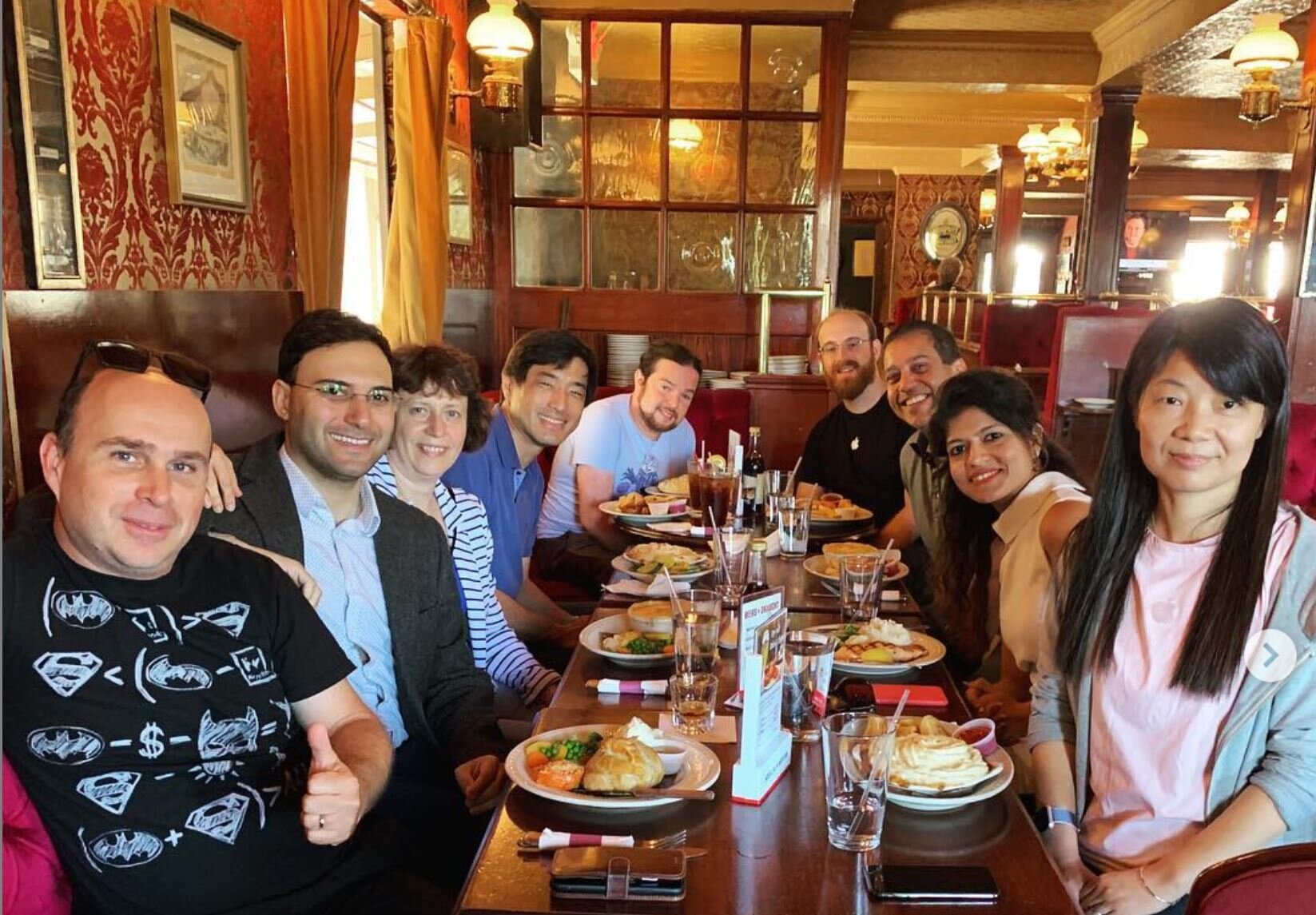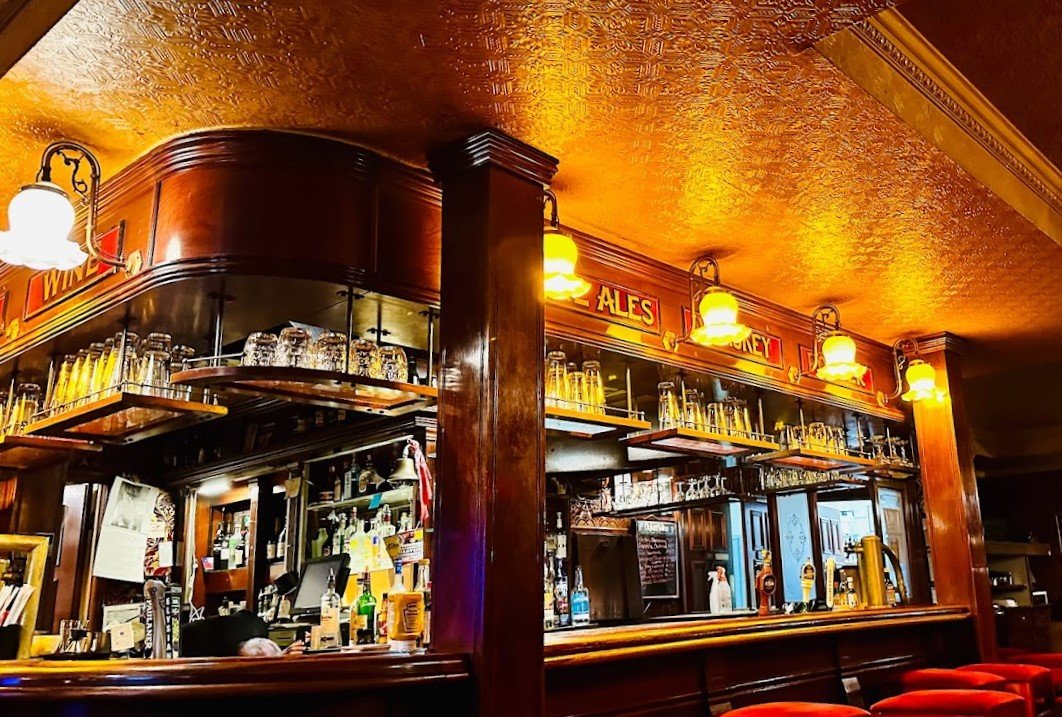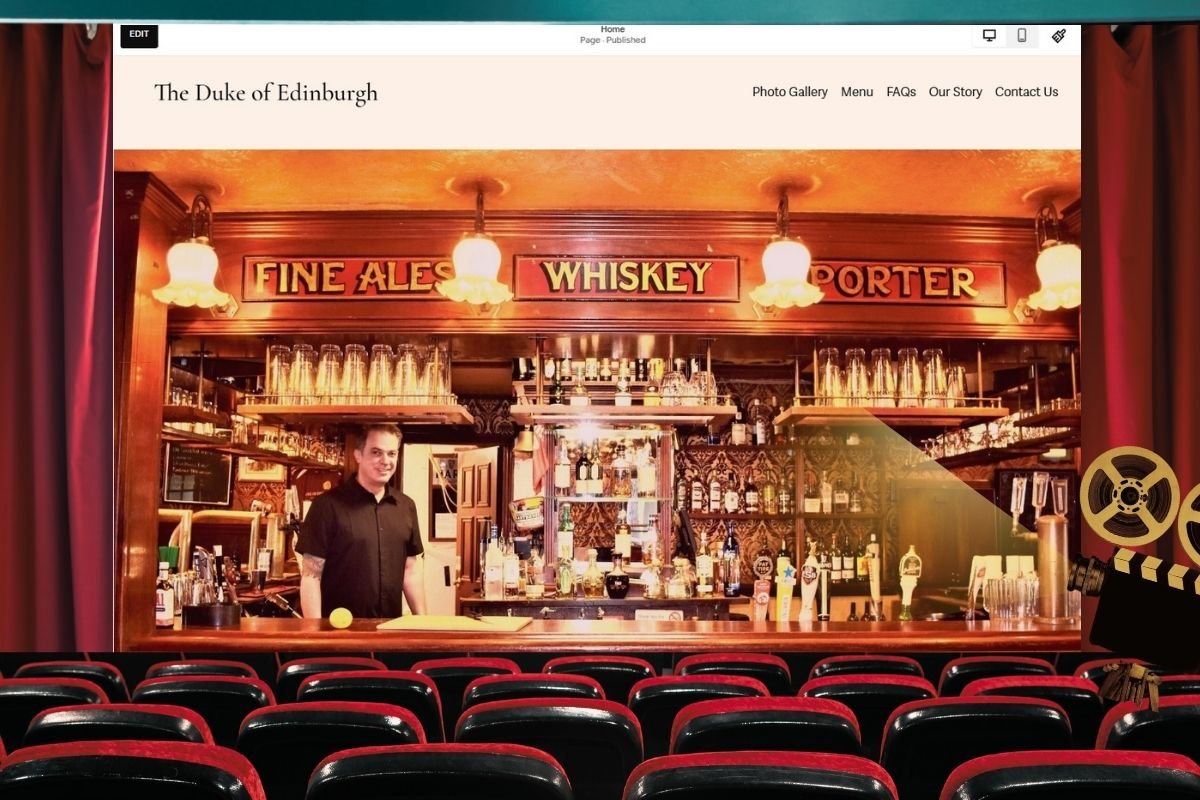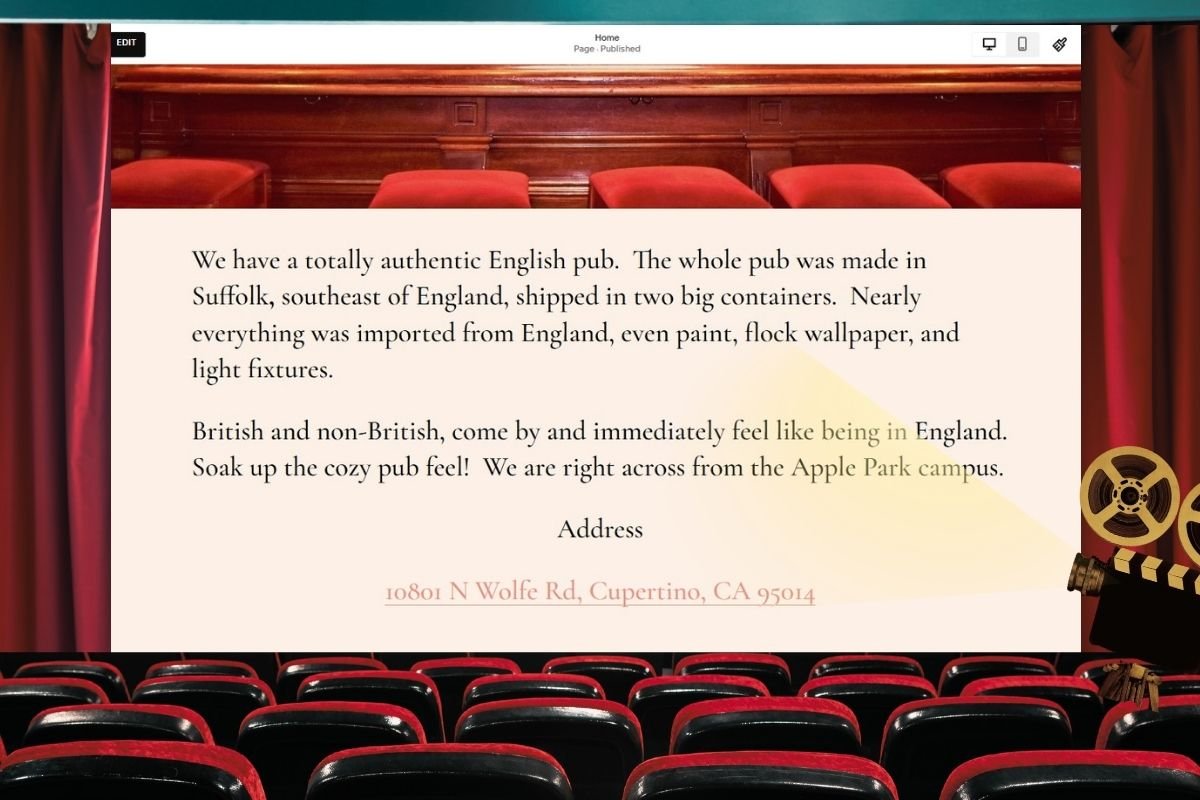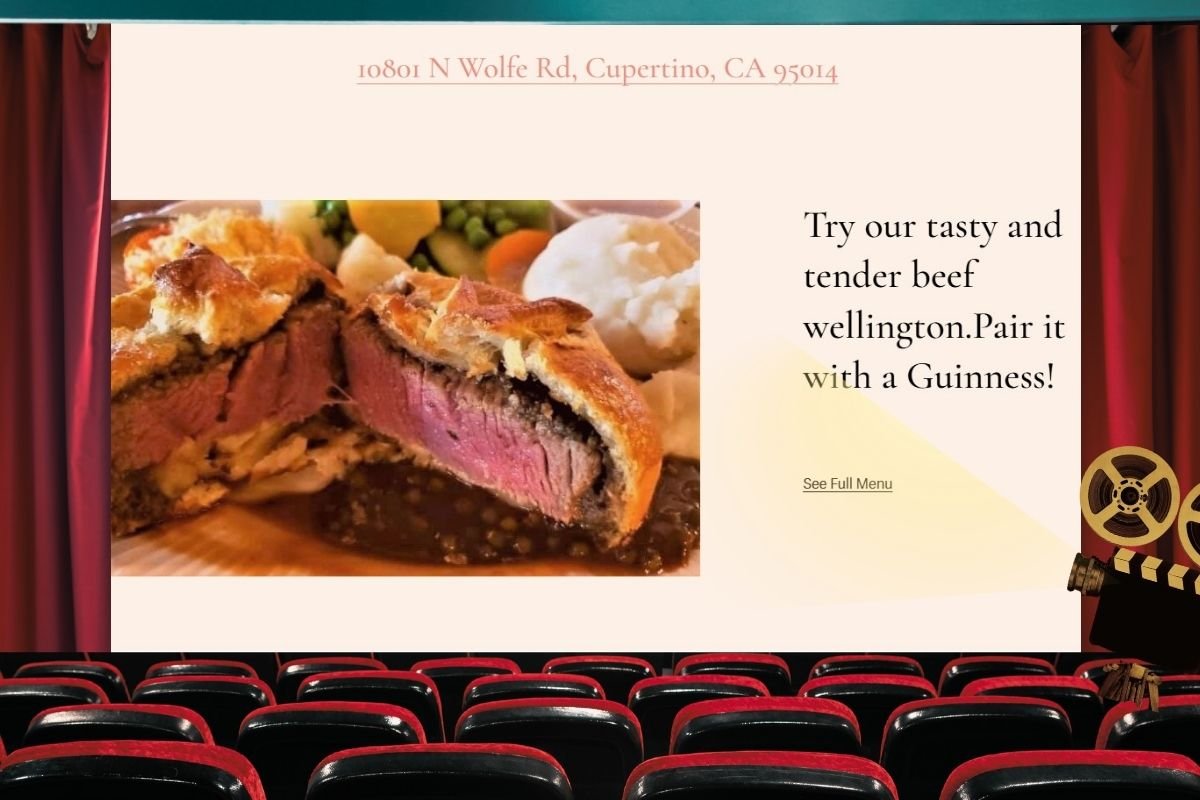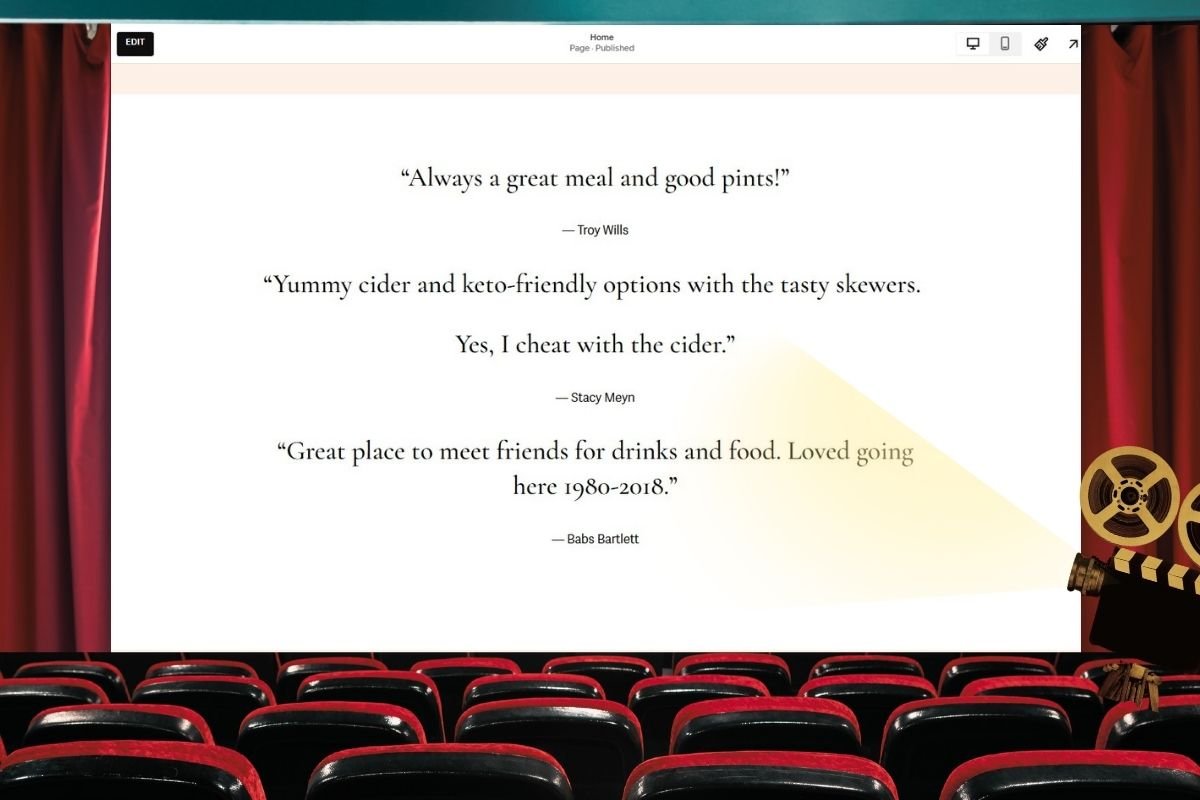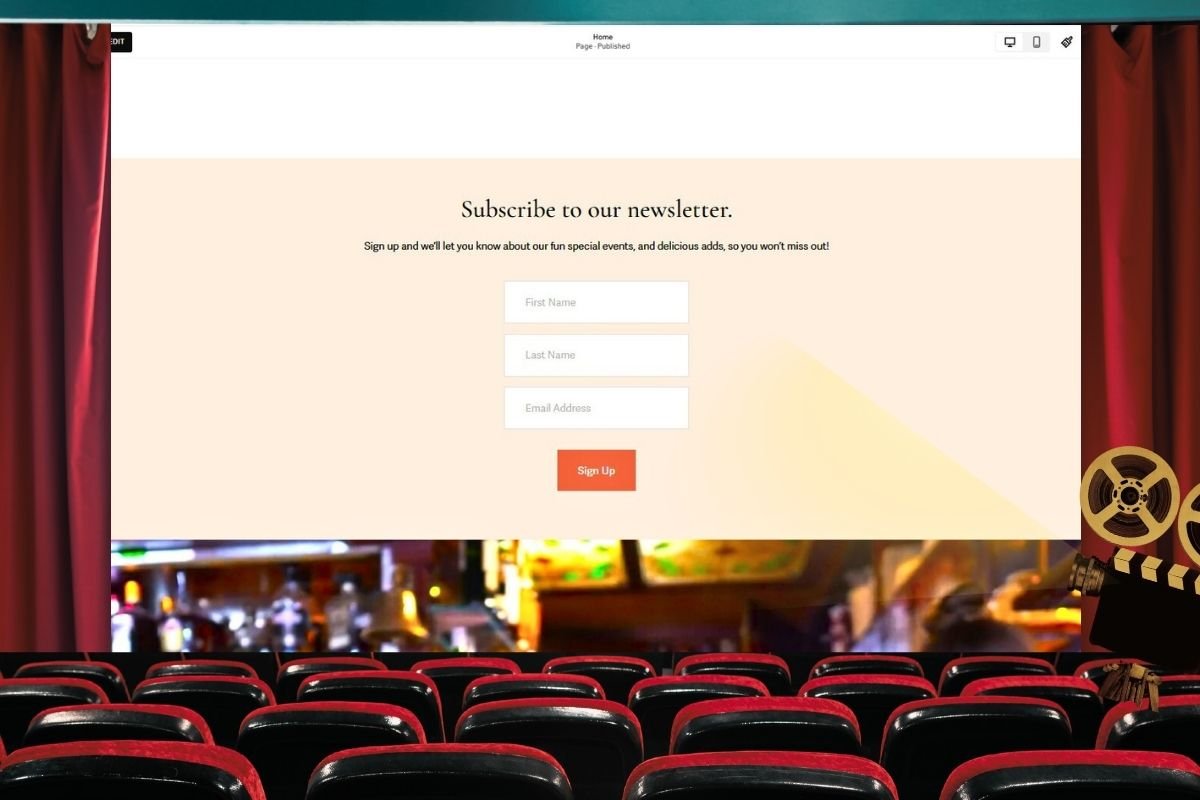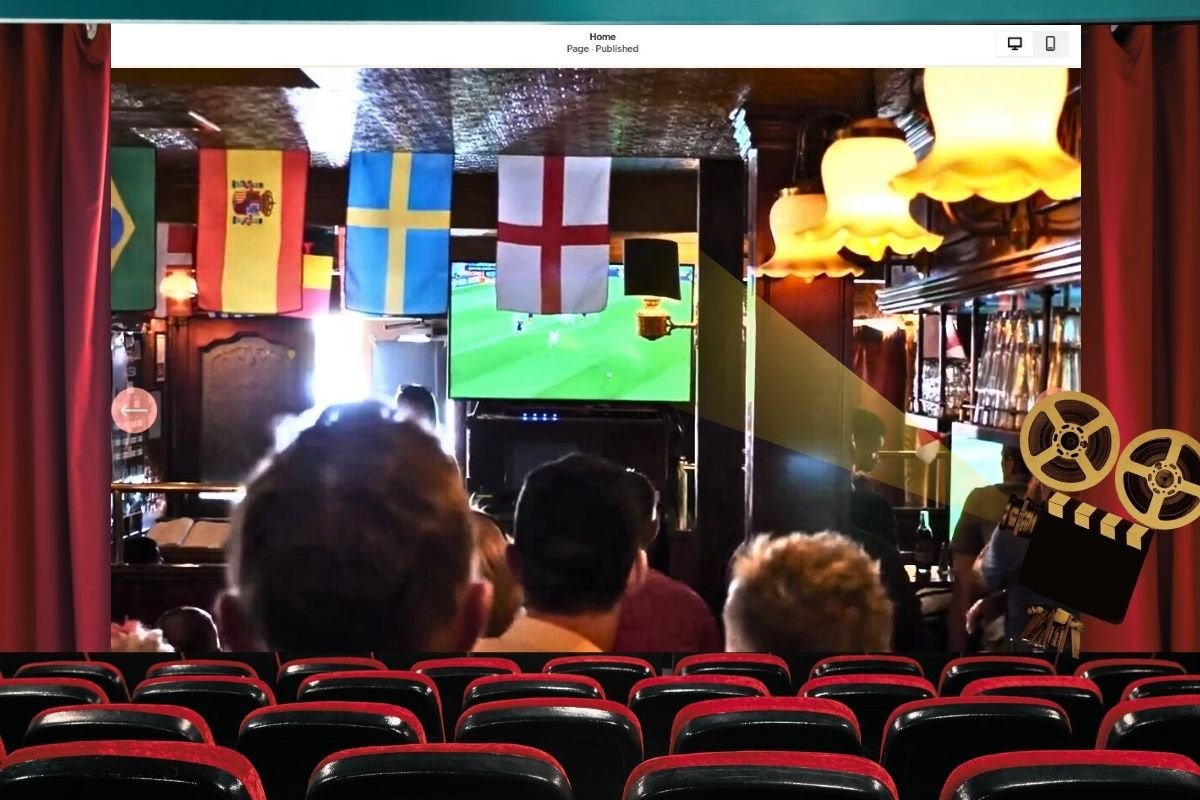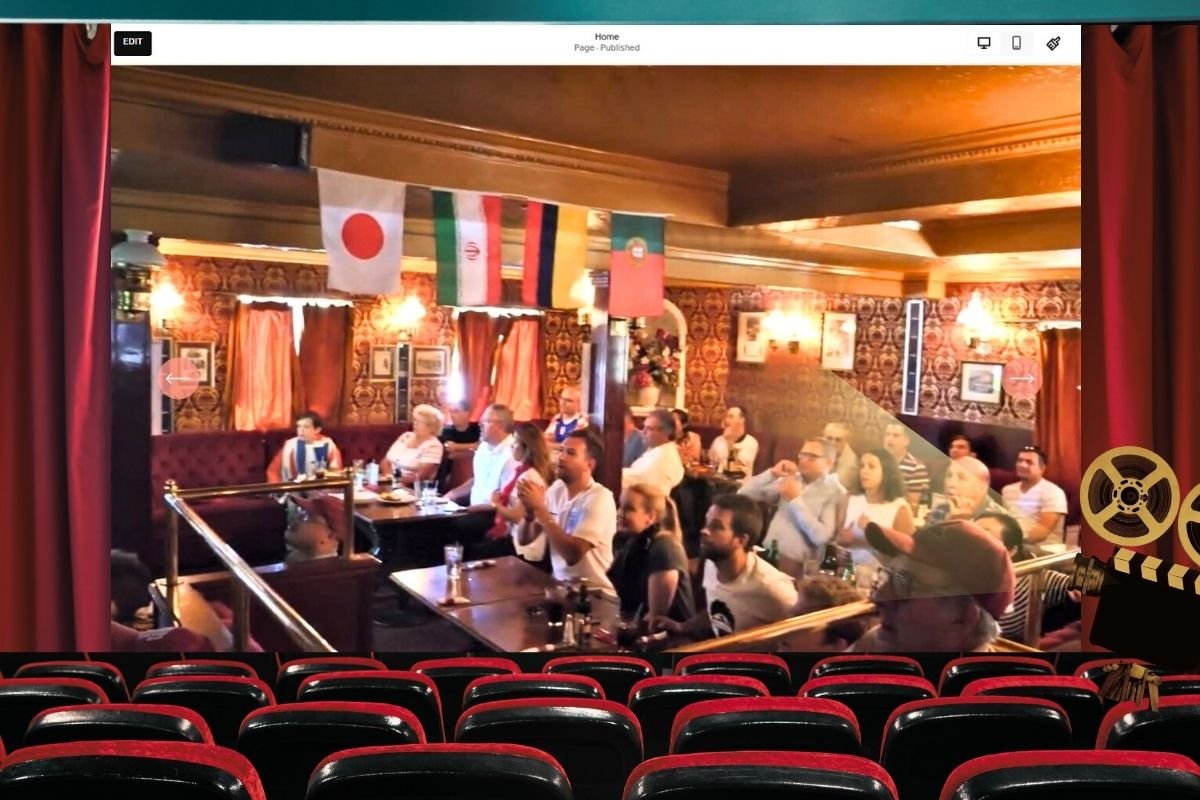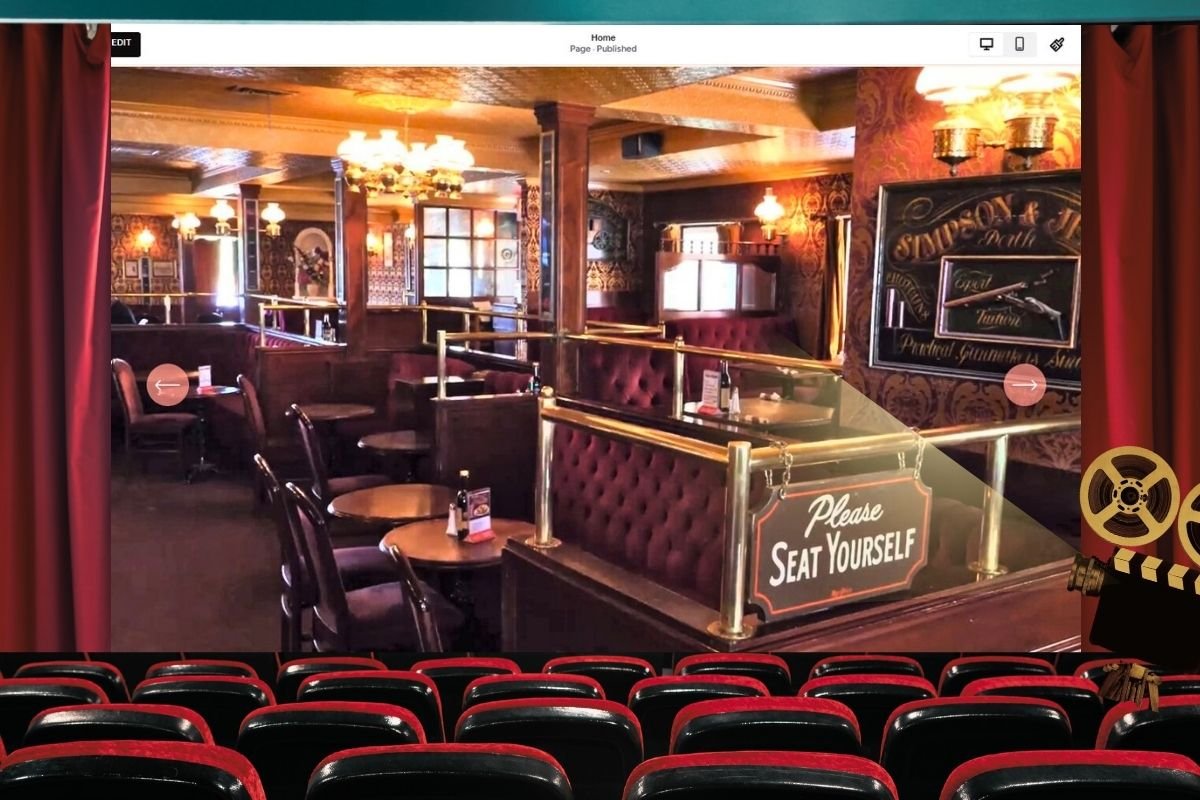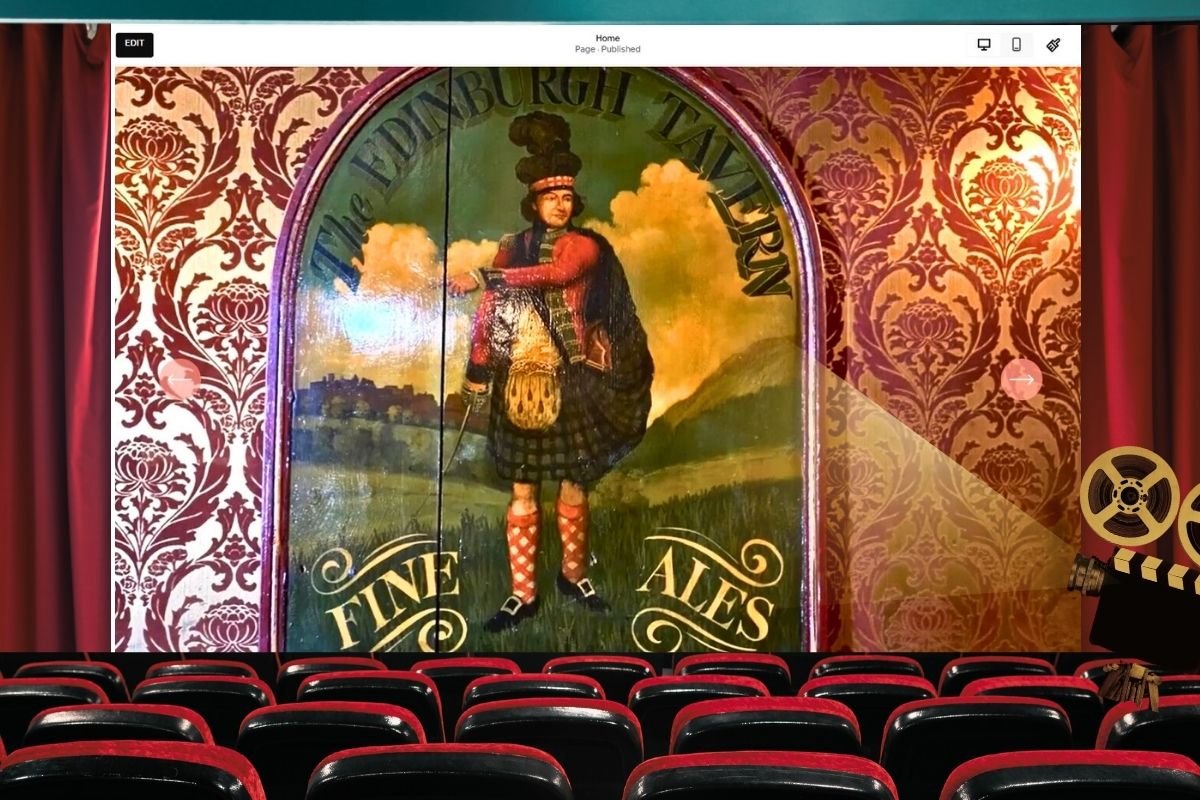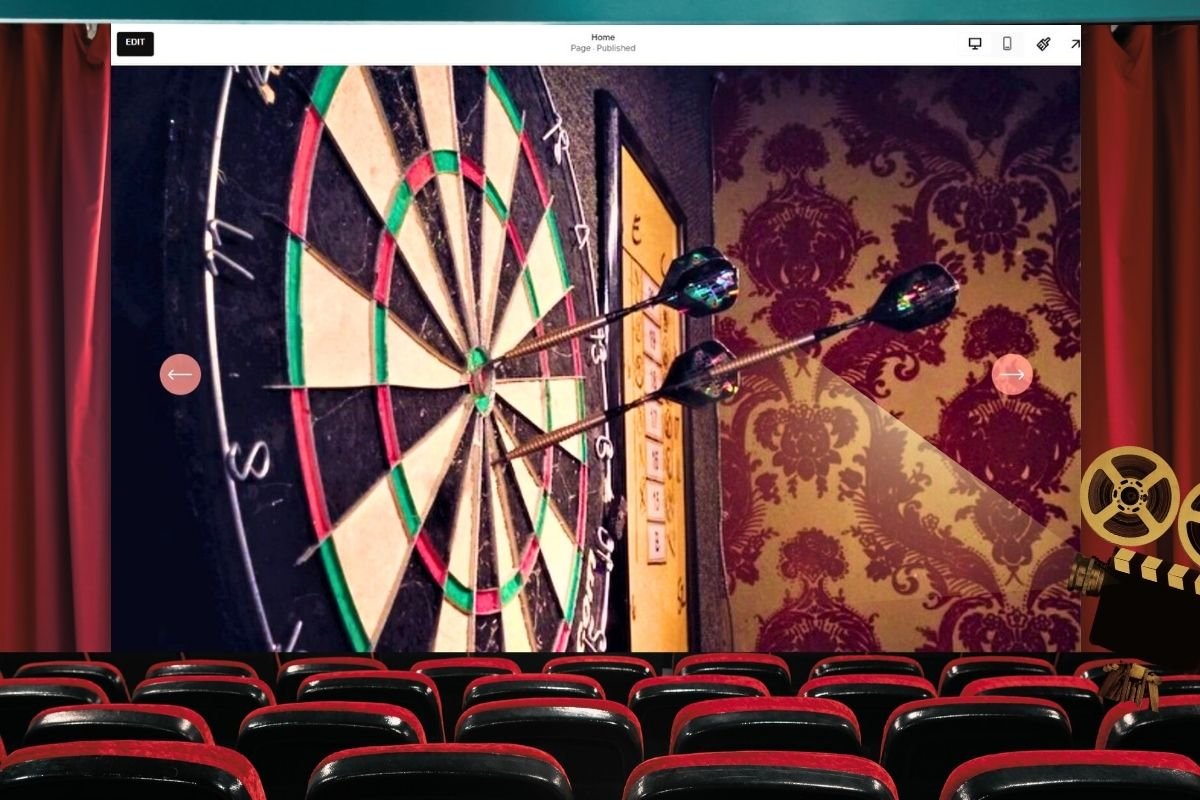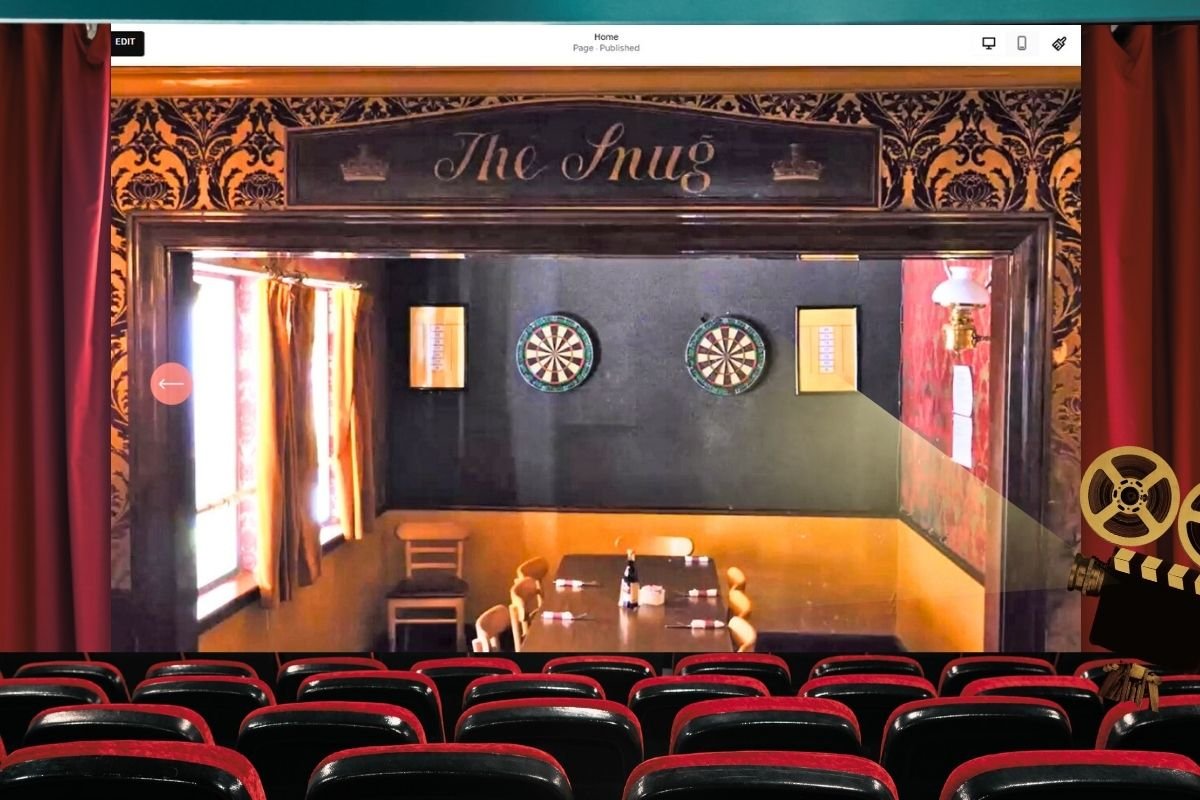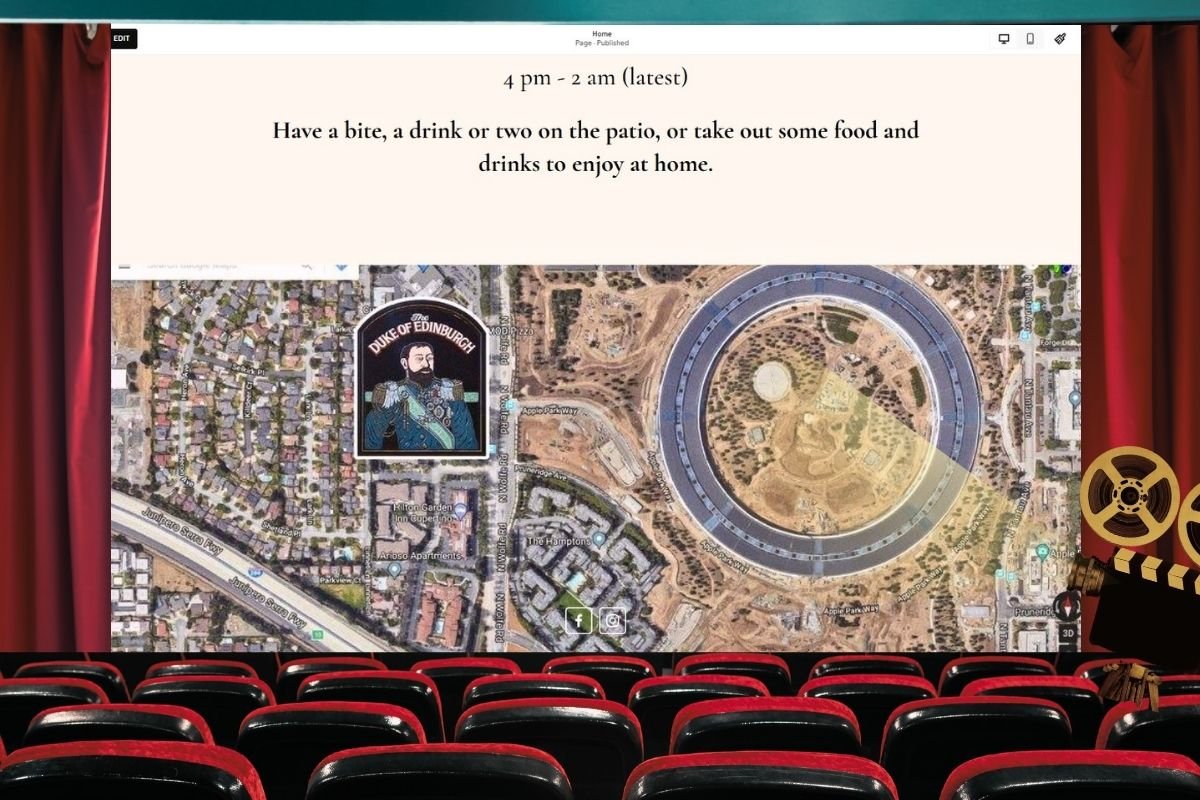A User-Centered Design Success Story:
How a Traditional Business Boosted Digital Engagement
User Experience (UX) Design Case Study Overview
Like many businesses, the oldest English pub in the South Bay struggled to attract customers during the pandemic, even with takeout and outdoor dining.
To help, I took a comprehensive approach—designing a user-friendly website from the ground up, making it easy to discover through search engines like Google, and creating an engaging, seamless experience that encouraged visitors to act. This approach addressed every key aspect of the pub's digital presence, from increasing discoverability, to fostering customer engagement and loyalty.
Why do these matter?
*A beautifully designed site means nothing if no one can discover it.
*And a site that looks great, but doesn’t inspire action won’t deliver results.
To keep customers engaged and coming back, I also integrated marketing, combining social media and email marketing strategies to help more people learn about the business, visit, and return.
The pub's needs were clear—and universal to all businesses and organizations: attract interest, give people compelling reasons to take action or visit, and build loyalty to keep them coming back.
Explore the full range of solutions, including search engine optimization (making the website easier to find on Google), social media (Facebook and Instagram), and email marketing, in the Comprehensive UX Solutions section.
Comprehensive UX Strategy for Driving Results
Overhauled the website’s UX to design an intuitive, user-friendly experience that drives action, which leads to more in-person visits (conversion-focused) .
Enhanced online visibility with SEO, using targeted strategies to improve search rankings and make the website more discoverable.
Built brand awareness and engagement through targeted social media marketing, keeping customers interested and top-of-mind.
Integrated email marketing to boost retention and encourage repeat visits.
Click the button or any link to explore each solution strategy in detail.
How These UX Improvements Can Benefit Any Business or Organization
These UX improvements turned the pub’s digital presence into a powerful system that just keeps giving. It's like a well-oiled machine that repeatedly to bring in new leads, get people through the door, and keep customers coming back for more.
While this case study highlights the success of a pub, the same approach can benefit any business or organization—whether it’s a restaurant, community center, salon, spa, wellness center, a social impact or an entertainment company. The strategies are effective and proven to work across industries.
And the goal stays the same: to create intuitive, engaging, and action-driven digital experiences that get results—all through a comprehensive and user-centered design.
Bringing the Community Spirit and Authenticity to the Digital World
Before I understood what a pub really is, I thought it was just a place to grab refreshments. But it turns out, it's much more than that. It’s a gathering place where friendships were formed, stories were shared, and memories were made. That’s what the Duke of Edinburgh pub has been—a community hub in Northern California for decades, with a sense of history and connection that brought people together.
There’s nothing quite like it in the Bay Area—or likely across the U.S.—in terms of authenticity. Nearly everything used to build it over 40 years ago was imported from England. And I thought that’s refreshing especially when we’re surrounded by modern buildings without personality or character.
Yet, while its deep-rooted traditions made it a beloved spot, they also posed challenges.
For decades, the pub relied on foot traffic, word-of-mouth, and its undeniable charm. But during the pandemic, when people were more cautious about being out in public, its strongest asset couldn’t keep business flowing.
Its biggest strength needed a bigger stage—a strong digital presence to bring its charm online and connect with people just like it did in person.
Digital UX Strategy to Real-World Results
Background Story — Identifying the Challenges
Once bustling with regulars and Apple employees from across the street, the pub saw a steep drop in customers when office workers went remote.
One quiet afternoon, a longtime regular looked around the nearly empty space and suggested the owner get help—after hearing about my background. But after 35+ years of doing just fine, the owner was hesitant.
The problem? Foot traffic had dwindled, and relying on the old ways wasn’t enough. I explained that they needed a different approach—a digital strategy to reach people where they were: searching online.
As I reviewed the site, it was clear that the business wasn’t just lacking marketing efforts—it also faced significant UX design challenges.
The website struggled with discoverability, usability, missing key elements, and actionable features. Plus, the absence of boosted promotions via social media and a strategic system to re-engage users meant limited user awareness, engagement, and retention. These issues made it harder for the pub to attract new customers and keep loyal ones coming back.
What was needed? A strong digital presence that met both user needs and business goals—one that captured the pub's unique charm while fostering a connection with visitors and making them feel like part of the community.
My Roles
While the project initially started as a marketing need, my role involved a holistic approach centered around UX design that spanned multiple disciplines to ensure a cohesive user experience:
UX Designer: Crafted the intuitive, user-friendly website with a focus on usability and actionability, while adding compelling key elements and SEO optimization to boost discoverability and encourage action.
Web UI Designer: Designed the visual layout and interface, ensuring the brand’s identity was well represented and the website was visually appealling.
Content Developer: Collaborated on content strategy to keep the messaging clear, relevant, and aligned with the pub's brand voice, improving user engagement.
Integrated Marketing Consultant: Developed and implemented integrated marketing strategies, including email and social media, to drive engagement, repeat visits, and enhance customer loyalty.
This combined approach helped the website deliver more than just a great experience—it also drove measurable results in terms of customer interaction and business growth.
Understanding the Challenges
A. For High-Intent Users
Before we dive in, who exactly are high-intent users? Great question! These are people who know what they need and are actively searching for it online — whether it’s information, a service, or a product. Because they’re already closer to making a decision, their attention is incredibly valuable to any business or organization.
Overlooking these users can be costly, which is why it’s so important to prioritize their needs and create a clear path for them to take action.
Poor Site Discoverability Issue
-
When users searched for “authentic pub in bay area”, “authentic English pub bay area”, “traditional English pub bay area”, or even narrow down these searches to the city of Cupertino where the business is located, the website’s link would be buried in the search results.
-
It required a lot of scrolling to come across the business—even for highly relevant searches that included the business’ primary business offering and location. e.g. for “authentic English pub in Cupertino”
In these cases, we would expect the business to rank highly or be among the top search results.
-
Because most people will not keep scrolling, majority of potential customers were discovering other options first.
Since most people don’t keep scrolling, potential customers were likely finding other options first. That’s fine if they found what they needed, but it’s a missed opportunity if the pub didn’t show up at the top of Google search results for those specifically looking for it.
Takeaway
With people relying on online searches to decide where to go, it's crucial for websites to be easy to find. The pub’s website struggled to appear in search results, making it harder for potential customers to discover the business.
Improving online visibility was key to ensuring the pub didn’t miss out on valuable opportunities.
See how the SEO strategy helped more people discover the business online.
Site Usability Issues
Original website active until August 2021
-
Missing Visual Content (e.g. of the Staff, Food, and Their Authentic Interior, which is Supposed to be Their Claim to Fame)
Missing Testimonials or Reviews
Missing About Information
Missing Contact Form
Missing FAQ
Missing Actionability of Key Information (no interactive address and phone # links)
-
Missing Visual Content (Staff, Food, Interior): Lack of Visuals Made It Hard for Users to Get a Sense of the Place
Missing Testimonials or Reviews: Without Testimonials or Reviews, Users Felt Less Confident
Missing About Information: Not Having an 'About' Page Left Users with No Clear Story
Missing Contact Form: Without a Contact Form, Users Struggled to Reach Out
Missing FAQ: Users Lacked Quick Access to Common Questions Leading to Confusion and Possibly Missed Engagement
Missing Actionability of Address and Phone #: Not Having These Information Clickable Does not Make it Easy for Users to Connect with the Business
-
This issue created unnecessary barriers to user engagement and trust.
Takeaway
Customers need important details and features that enhance their experience to make a decision on choosing a business. So key information, effective visuals, and actionable elements needed to be added to the site where users can easily find them, to help meet their needs, build trust, and enable them to connect more easily.
See how we improved the website’s usability and overall user experience with holistic converion-focused UX design that drives action and engagement.
B. For Low-Intent Users
What do we mean by low-intent users? These are the users who aren’t actively looking for a solution at this moment. They might be casually browsing or exploring general information, but they’re not yet ready to make a decision or take immediate action.
While their intent is low, this part of the user journey is still important. It’s about capturing their interest, nurturing their curiosity, and setting the stage for when they’re ready to take the next step.
Limited Visibility Hurt User Awareness and Engagement
-
Without paid social media exposure, low-intent users casually browsing couldn’t discover promotions, events, or updates about the business.
• The absence of targeted ads meant fewer opportunities to capture their attention and drive engagement.
-
Without seeing special offers or events through targeted social media campaigns, users missed out on exclusive deals, reducing their chances to engage.
This lack of visibility meant fewer opportunities to convert casual browsers into loyal visitors.
-
• Low visibility on social media meant that potential customers were unaware of the pub’s events and promotions, limiting engagement and conversions.
• Without this visibility, there was a missed opportunity to attract new customers and drive repeat visits.
Takeaway
To reach a broader audience and raise awareness, it’s crucial to invest in social media outreach (paid boosted posts) to reach low-intent users who aren’t actively searching but still need to be engaged.
Increased exposure through paid ads boosts visibility, enhances user interaction, and ultimately improves conversions by reaching potential customers who may not have otherwise found the pub.
Explore how the targeted paid social media strategy increased visibility and engagement.
Lack of Re-Engagement Tools Reduced User Retention
-
Without email marketing and other re-engagement strategies, it was difficult to bring back past visitors.
Missing tools like email follow-ups and reminders for events and offers blocked opportunities to retain and re-engage customers.
-
If users can’t easily sign up for email updates or reminders about upcoming events and special offers, they miss out on the latest news, leading to lower engagement and reduced satisfaction.
-
Visitors who may have shown interest before are likely to lose connection with the brand, especially with the distractions online and short attention spans.
Takeaway
To retain users and keep them engaged, integrating clear sign-up options like email newsletters or subscriptions is crucial.
In this case, a sign up for a newsletter that will allow users to receive timely event updates and special offers would be beneficial to the customers and the business. It re-engages past visitors encourages repeat visits.
Learn how the email marketing strategy nurtured loyalty and encouraged repeat visits.
Comprehensive User-Centric Design that Deliver Measurable and Tangible Results
This project shows how the best UX design, combined with SEO and digital marketing, can work together to create a strategy that really moves the needle.
Understanding that design isn't just about aesthetics, I focused on making sure users had a smooth, engaging journey. I chose elements like compelling visuals and a story that reflected the pub’s unique character—helping to build trust, spark interest, and guide visitors to take action.
The goal was clear: Help people find the pub, easily access what they need, connect with its story, and create an experience that would make them want to come back.
To make this happen, I focused on:
• SEO to boost online visibility and ensure the pub appeared in relevant searches.
• UX design aligned with business goals to convert online interest into in-person customers.
• Social media marketing to elevate brand awareness.
• Email marketing to build loyalty and encourage return visits.
By designing all-encompassing strategies that drive growth, the business’s digital presence was strengthened. With a seamless, intuitive experience across the website, email, and social media, potential customers could easily find the pub, explore its offerings, and stay engaged.
This flow shows how users might find the business through a search or social media post, then easily take the next step—like filling out the contact form or clicking the phone number to call.
Conversion-Focused Design for a Smooth User Experience that Encourages Action
I used a conversion-focused approach to design a smooth, user-friendly experience that encourages users to take action. Because a site that looks great but doesn’t drive meaningful interactions won’t deliver the results a business needs.
Conversions happen when users take actions like signing up for a newsletter, clicking on the address link to navigate to the business’s location, or engaging with a post—these actions show active engagement with the business.
I placed strategic calls-to-action (CTAs) across the site, social media posts, and email newsletters to guide users toward these actions, ensuring they were encouraged to interact and follow through.
By meeting users where they are and guiding them through a seamless journey, I created a design that made it easy for them to find what they needed and take the next step, driving real, measurable results for the business.
This flow highlights how connecting the website, email, and social media creates a seamless journey. Users can discover or interact with the business through search or social posts, then easily find event details, sign up for updates, or take action—whether that’s visiting in person or engaging online.
Comprehensive, User-Centered Design for a Seamless, Engaging, and Rewarding Experience
I took a comprehensive approach by connecting the website, email, and social media to create a smooth and enjoyable user journey. By designing these channels to work together, I made it easy for users to discover the business, stay engaged, and feel satisfied with their experience.
For example, a casual social media browser (a low-intent user) might see a pub event post, click “Learn More,” and visit the website to check out event details and photos. From there, they might decide to visit in person or sign up for email updates to stay informed about future events.
Meanwhile, someone actively searching for a traditional pub in the area (a high-intent user) might find the website in search results, explore the menu, and use the address link for directions. They may also return later to sign up for special offers or updates.
By combining UX design with SEO, social media, and email marketing, I created a connected experience that encouraged users to stay engaged and feel like their actions led to something positive. This strategic, well-rounded approach improved engagement, strengthened the pub’s digital presence, and boosted in-person visits—delivering meaningful results for the business.
User-Centered UX Strategy & Digital Optimization
Capturing the Heart of the Business:
Traditional, Nostalgic, Communal Experience
UI Color Palette
While designing the following sections of the site, I focused on adding elements that evoke feelings of tradition, nostalgia, and community to craft an inviting, user-centered, and brand-aligned experience.
Through visual storytelling with the aid of colors that bring out feelings of rich traditions, familiar comfort, coziness, and warmth, I connected with users emotionally, enhancing engagement and setting the tone for a nostalgic, communal atmosphere before they even stepped inside.
Creating a Seamless Website Experience that Drives Action: Helping Users Find, Engage & Re-engage
Goal:
Create a user-friendly website that’s easy to navigate, engaging, and aligned with business goals of attracting customers and improving engagement.
User-Centered Design:
The entire site was redesigned to highlight key business information and feature visuals like photos of the staff, food, and the pub’s authentic interior. I collaborated with the owner to add content for the About Page, menu, and FAQ, ensuring these details were easy to find. Key elements like the location and phone number were made clickable, with an interactive Google Maps address for easy navigation.
Enhanced Navigation & Accessibility:
I simplified navigation, ensuring that the site was intuitive and mobile-responsive. Added a contact form and FAQ page to reduce friction. Interactive features like clickable phone numbers made it easier for users to take action.
Conversion-Focused Design:
The design was crafted to guide users toward taking action, with clear calls to action (CTAs) encouraging visitors to see the menu, sign up for the newsletter updates, dine in the patio, or pick up food and drinks. By adding visual content that highlights the pub’s rich tradition and vibrant community, and ensuring interactive elements, users can quickly find the information they need, boosting their confidence in engaging with the business.
Brand Consistency:
The new design fully reflects the pub’s authentic identity, showcasing staff portraits, food images, and shots of the interior, helping users connect with the brand and fostering trust in their decision to visit.
Fixing Pain Points:
Missing Visual Content: Added images of the staff, food, and the interior to give users a sense of the pub's atmosphere which helps in their decision to visit or not.
Missing Testimonials/Reviews: Included customer reviews to build trust and encourage new visitors.
Missing Substantial About Info: Painted a clearer picture of the pub’s beginnings in the About Page and shared some of the owner’s sense of humor to build an emotional connection with users.
Missing Contact form: Added a contact form so users can easily submit their questions or requests.
Missing FAQ page: Added an FAQ page to give self-service support for user efficiency so users can quickly access answers to common questions without having to look elsewhere.
Missing Actionable Features: Implemented clickable phone numbers and an interactive map to simplify navigation and reduce friction.
Results:
With a focus on user-friendly design and addressing key pain points, the new site is easier to navigate and more engaging, leading to better alignment with business goals. The content collaboration helped create an authentic experience, improving engagement, reducing visitor drop-offs, and increasing conversions.
Enhanced Usability and Engagement Impact
The redesigned website transformed the user experience, making it easier for visitors to find key information, take action, and stay engaged.
With better navigation, accessibility, and interactive features, the site reduced bounce rates and boosted customer interaction. More users called the pub, signed up for updates, and visited in person—resulting in higher engagement and increased customer visits.
The seamless integration of interactive features, mobile responsiveness, and engaging visual content increased user confidence and drove higher conversions. These user experience improvements strengthened the pub’s digital presence and business growth, leading to more visits (conversions), higher engagement, and increased customer loyalty.
Discoverability Solution Through SEO
Goal:
It’s very important for any business to have high-visibility in search results especially for relevant queries of high-intent customers who are close to making a decision.
In this case, the relevant search topics or keywords that the pub should rank high has to do with what it offers and its location. So people searching for a traditional/authentic pub or traditional English/authentic English pub in the area should easily find the business.
Fixing Pain Points:
Built the site with SEO best practices to ensure strong rankings.
Strategically placed targeted keywords to help Google recognize the pub for relevant searches.
Designed a clear site structure with optimized content so Google could easily understand and rank it.
Implemented local SEO enhancements, ensuring the pub appeared in Google Maps and local searches.
Results:
Boosted visibility: The pub started ranking on page 1 for key searches.
Increased website traffic, which led to more foot traffic.
Customers searching for a traditional or authentic pub in the area could easily discover the pub.
Thankfully for this particular business they have a unique offering that makes them stand out. This helped in the work of improving their ranking on Google’s search results.
By optimizing for Google search, local SEO, and user intent, I made sure the pub was easy to find, bringing in more customers and opportunities.
Although there’s no guarantee of appearing on the top results immediately, the strategy to optimize websites to rank higher on search engines like Google should be an ongoing effort that we can treat as a marathon versus a sprint.
Improved Online Visibility Impact through SEO
The business’ website started ranking high on Google search results for relevant queries such as: “authentic English pub Cupertino”, “authentic English pub bay area”, “traditional English pub Cupertino”, “traditional English pub bay area”, and even more general terms such as “traditional pub Cupertino”, “traditional pub bay area”, and “authentic pub bay area”, which is even more excellent.
Discoverability Goal: For the business to show up in one of the top Google search results when people use the keyword “authentic english pub cupertino”.
Successful Result: The business, via its site link, is ranking highly on Google as the 1st search result listed top of page 1.
Discoverability Goal: For the business to show up in one of the top Google search results when people use the keyword “authentic english pub bay area”.
Successful Result: The business, via its site link, is ranking highly on Google as the 3rd search result listed top of page 1.
Discoverability Goal: For the business to show up in one of the top Google search results when people use the keyword “traditional english pub cupertino”.
Successful Result: The business, via its site link, is ranking highly on Google as the 1st search result listed top of page 1.
Discoverability Goal: For the business to show up in one of the top Google search results when people use the keyword “traditional english pub bay area”.
Successful Result: The business, via its site link, is ranking highly on Google as the 3rd search result listed top of page 1.
Social Media Marketing Solution:
Boosting Brand Awareness and Community Engagement
Goal:
Increase brand awareness and engagement by using social media to connect with a wider audience and promote the pub’s events and offerings.
Why Focus on Facebook and Instagram Social Media Marketing?
It’s a good question—why concentrate on Facebook and Instagram instead of channels like display ads, paid search, or YouTube to boost brand awareness for low-intent users?
At the time, it was crucial to be super efficient and productive since the business had taken a big hit, and conversions were down. Narrowing down options to zero in on one or two platforms that could deliver the best results quickly was the smartest move.
Display ads can be used for low-intent users, but people have developed banner blindness so it wouldn’t be effective to use. All other channels will take a lot more time to develop and gain traction.
Facebook and Instagram have proven to deliver a massively higher return compared to other social media channels then. With the business needing fast, effective results, prioritizing these platforms was the clear choice. So, I recommended using them to launch targeted campaigns with an estimated reach designed to help meet the business's conversion goals.
Stats on Social Media Platforms’ Return on Investment (ROI) performance shared with the business owners in 2021, as part of the business proposal to launch paid Facebook and Instagram social media campaigns.
Engaging Social Media Content to Build Awareness
Paid social media, in addition to the existing social media posts done within the business’ Facebook group, was developed to make it possible or easier for the broader audience (people who may or may not be aware of the business or its offerings) to discover events. But the content did more than just promote events—it built a sense of community. Brand-consistent visuals and messaging connected users to the pub, showcasing its offerings in an engaging and relatable way. And posts encouraged interaction through likes, shares, and comments. This led to higher engagement rates and increased visibility.
Results:
The social media campaign fostered connection between the business and customers who weren’t initially looking for the business, increasing brand visibility and user engagement. By consistently sharing value-driven content that resonated with users, the campaign helped raise awareness and enhanced the user experience by making it easier for people to find relevant events, promotions, and updates. This ultimately increased brand loyalty and repeat visits, driving more offline engagement and building a deeper relationship with the pub's community.
Elevated Engagement Impact through Social Media
By creating content that really spoke to what customers wanted to hear — while staying true to the brand’s offerings — we got people excited about special offers and events. This drove a solid 4% average engagement rate, which is actually a big win.
To put it in perspective, an engagement rate of 1-5% is considered great for this kind of marketing, so hitting 4% shows people weren’t just seeing the posts but actively interacting. It’s like being at a concert with 100 people, and 4 of them stopping to chat with you — real, meaningful engagement that shows the content really resonated and got people involved.
Social Media Campaign Examples with Strong Engagement After a Few Weeks
This boosted social media post for the anniversary celebration drew a strong 4% engagement.
And the social media post promoting the live music event delivered a solid 5% engagement.
And finally, this watch party social media post scored big with an impressive 9% engagement!
Email Marketing Solution: Driving Engagement and Repeat Visits
The Goal: To drive repeat business and build brand loyalty with personalized, impactful email marketing strategies.
Why Use Email Marketing for Customer Retention:
Email marketing is still one of the most powerful ways to drive conversions and sales, and it's a go-to channel across many industries.
When I was designing the pub’s website, I recommended adding email marketing to stay connected with customers and encourage repeat visits. With email marketing offering an average $36 return for every $1 spent, it’s not only highly effective but also cost-effective for small businesses looking to boost engagement and sales.
This works especially well for B2C businesses like pubs, restaurants, and cafes. Research shows email marketing gets an average 2.8% conversion rate for B2C brands including those in food and beverage. While that might seem small, it adds up fast—about 3 out of 100 people who get an email will take action. Whether that’s visiting the business, showing up to an event, or interacting with your brand, those small actions really make a difference, especially when you’ve got a big email list.
By combining thoughtful UX design with email marketing, I helped the pub build stronger customer relationships and boost sales.
Personalized Email Marketing Solution Details:
To keep users engaged and coming back, I implemented a newsletter signup for users who had visited the website either organically (e.g. through Google search, word-of-mouth, etc.) or through paid media (e.g. Facebook and Instagram ads). This made it easy for users to stay updated on new menu items, upcoming events, and exclusive offers—giving them more reasons to return.
Emails were designed to feel like friendly, personal invitations rather than traditional sales pitches. To capture the reader's attention, make users feel more connected to the brand, and drive action (such as clicking through to reserve spots for events), I crafted newsletters with the following:
Engaging visuals
Brand-consistent cotent
Personal and relatable touch
Curiosity-driven subject lines
Emotionally resonant messaging
This approach led to higher open rates, increased click-through rates, and more conversions (e.g. event reservations through platforms like Eventbrite), ultimately increasing in-person visits.
Engage users who may have found the pub through organic search or paid ads and encourage repeat visits through personalized and compelling email marketing strategies.
Results:
By staying true to the pub's brand voice and keeping users informed and engaged, the email marketing campaigns significantly boosted engagement, fostering stronger connections with the brand, which helped strengthen customer loyalty and increased repeat visits.
Reengagement and Customer Retention Impact through Email Marketing
Welcome Email
Re-engagement * Follow Through
Re-engagement * Follow Through
Sample Excerpt of a Reengagement Email
Email Sign up with its Call-to-Action Prompt
With compelling and relatable newsletters written in the brand’s voice, the email campaigns achieved an impressive 67% open rate—a massive win in email marketing!
To put that into perspective, the average open rate across industries is just 22.61%. That means these emails performed nearly three times higher than the industry standard—about 196% better!
Imagine sending an invite to 100 people and having 67 of them stop what they’re doing to check it out—compared to the usual 22. That's a huge jump in visibility and a major opportunity to boost sales, event attendance, or customer engagement!
This success came from thoughtful content, strategic timing, engaging design, and sparking curiosity—proving that the right approach can turn emails into a powerful tool for driving results in digital marketing.
Driving Real-World Impact Through Comprehensive UX Design, Strategic SEO, and Integrated Digital Marketing
By leveraging strategic website design, SEO, and marketing initiatives, this project delivered measurable success. The approach taken here can help businesses in various industries enhance their online presence, attract the right audience, and convert visitors into loyal customers.
By combining effective UX design with strategic email marketing, the pub’s website became more than just an online presence — it became a powerful tool for driving repeat visits and boosting customer engagement. With email marketing’s strong ROI and proven effectiveness for B2C businesses, this approach helped the pub stay top-of-mind with customers, encouraging them to return for events, specials, and memorable experiences.
This project showcases how UX design is not just about making things look good or functional—it’s about creating a seamless, intuitive experience that engages users and drives tangible business growth through well-thought-out strategies.
